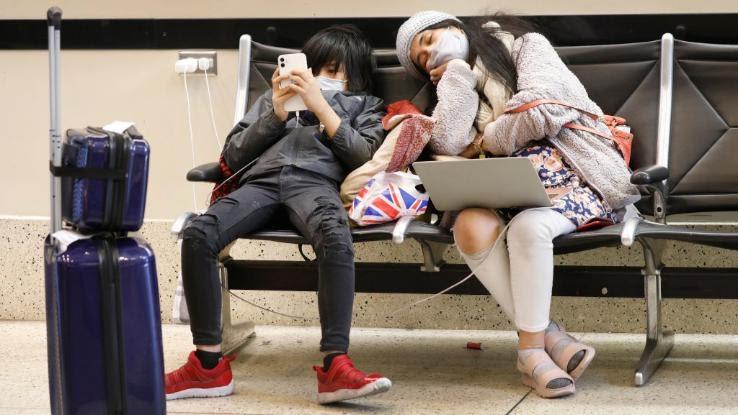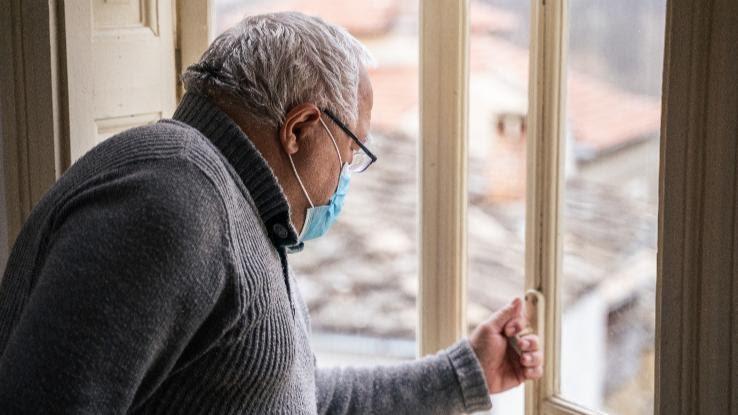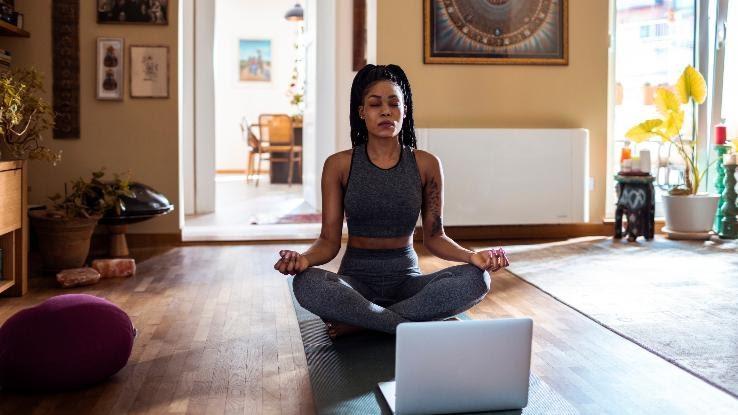
By now, we’ve all heard of pandemic fatigue. The term may bring up memories of premature Spring Break trips or that wedding that, in hindsight, was probably too risky. In November of 2020, U.S. Surgeon General Jerome Adams told NPR’s All Things Considered that what medical professionals started calling “pandemic fatigue” had become a determining factor in the various surges of cases. And that trend has continued well past 2020.
Pandemic fatigue is not just the willful denial of scientific facts or indoctrination by disinformation. It also shows up in all of us when we opt in to a riskier than normal situation because we need to prioritize our mental health. Neuroscientist David Badre explains that the adherence to ever-changing public health precautions requires a significant amount of cognitive control, and we’re generally willing to expend that energy when we are motivated by the outcome of that effort. But when months (and now years) of changing masking and social distancing protocols don’t yield the results we were motivated by, our ability to muster that cognitive control wanes. Meet pandemic fatigue.
Now, luckily for us, we’re currently living in a moment of looser restrictions. At the time of this writing, mask mandates have been dropped in most places, in response to low levels of community transmission and vaccine efficacy. Strangely, this produces its own set of challenges. Many of us are used to combatting our pandemic fatigue, and disciplining ourselves away from the exact sorts of behavior we’re now being told is acceptable. Mental health experts are recognizing signs of trauma in response to the pandemic, and one symptom of trauma is that it causes you to sense danger in safer places.
It is normal, as restrictions loosen, to doubt your judgement. It is normal to wonder, “am I making a safe choice or is this just pandemic fatigue?”
What Are the Symptoms of Pandemic Fatigue?
According to the CDC and UCLA Health, pandemic fatigue can manifest in a variety of ways. Common symptoms of this ailment — the “very real feeling of exhaustion stemming from the effects of the novel coronavirus on your life” — include:

- Emotions such as fear, anxiety, loneliness and/or hopelessness
- Eating and/or sleeping more or less than usual
- Difficulty concentrating (brain fog)
- Edginess, irritability and/or the tendency to snap at others
- Decrease in motivation
- Racing thoughts
- The tendency to withdraw and isolate
- The worsening of chronic health or mental health conditions
- Increased use of alcohol, drugs or tobacco
The CDC further notes that a person’s background, financial status, social support network, community and overall health can all impact the ways they respond to the stress of the pandemic. Some of us might navigate the situation differently than others simply because our lives are different — but that doesn’t negate the very real feelings it’s stirring up. The pandemic is a long-term event that’s affected people around the world on a level beyond that of any other event in recent history. And that’s precisely why it’s so essential to learn about this type of fatigue and how to best take care of yourself in return.
The Dealing-With-COVID Struggle Is Real
Depending on where you’re located in the United States, you may have already endured multiple lockdowns throughout 2020 and 2021 as a preventative measure to limit the effects of the COVID-19 crisis. Some folks, whether they live in areas where the virus has hit the hardest or not, have more or less been in a state of continuous quarantine since March 2020. This is especially true for folks who are immunocompromised or unable to be vaccinated. And this drawn-out back and forth — not to mention the relative isolation it’s required — can take a big toll on how you’re feeling each day.

According to the Centers for Disease Control and Prevention (CDC), the current pandemic-induced combination of stress, social distancing and economic insecurity is adding up to create some very real mental health challenges — challenges that contribute to pandemic fatigue. The Wall Street Journal recently reported that inflation is the highest it’s been in four decades. This is hard for everyone, but especially hard on those living close to the poverty line and on seniors living off of carefully budgeted retirement income (two groups of people who also dealt with some of the worst health impacts of the pandemic).
There is a bright side though. Vaccines continue to be effective at preventing serious illness and death as new variants emerge. The CDC has rolled out a county-by-county case tracker, with public health recommendations available at a local level based on community spread. And most places are enjoying lifted mask mandates and safer-feeling social gatherings.
Is There an End in Sight?
Well, yes and no. It is true that the pandemic will end. But exactly what that “end” looks like is still unknown, and it’s unlikely to be the complete return to normal that we all were working towards back in early 2020. Instead, the pandemic phase will likely cede to an endemic phase, in which we still live with the coronavirus, but surges happen in more predictable, and less disruptive ways. This doesn’t mean that it won’t continue to be dangerous, or that precautions will cease to be necessary. One expert explained it as a “transition from the pandemic’s seemingly unending state of emergency to what will likely be a long, uncomfortable coexistence with SARS-CoV-2.”

Still, just how uncomfortable that coexistence is has a lot to do with what we do now. In March of 2022 the World Health Organization laid out several different possible futures for how this pandemic could evolve. In one future, the virus becomes less dangerous and more predictable, with seasonal spikes much like the flu. In another future, the virus mutates to become more dangerous and learns to successfully evade vaccine immunity. The WHO noted that continued surveillance of the virus and its mutations, along with robust public health measures and access to clinical care was necessary to help stave off the worst of these scenarios. In other words, our collective pandemic fatigue might not be only in the rearview mirror.
Yes, You Can Fight Pandemic Fatigue
It is likely that, just as the virus continues to surge and retreat, so will our levels of pandemic fatigue. Hopefully you feel a little bit more adept at noticing and naming this phenomenon when it surfaces for you. And when it does, experts suggest that you:

- Take care of your body: A little exercise can go a long way towards helping fight depression or anxiety. Channel your energy into something healthy by designing your own exercise routine or taking advantage of one of the many online fitness classes available. Take some downtime, if you have it, to learn to cook healthy new dishes for yourself and your family.
- Limit your news intake: Between the pandemic, other lingering effects of 2020 and 2021’s continuing deluge of overwhelming headlines, the news can sometimes feel like a nervous breakdown waiting to happen. Stay informed, but don’t let yourself fall into the rabbithole of constant vigilance. Take steps to avoid doomscrolling.
- Connect with others: It’s incredibly important to connect with others over the phone or via Zoom during this time. Social media can also be an outlet, but try to avoid getting sucked into it for hours at a time. Set healthy boundaries when it comes to the people you connect with. If you have a friend whose posts are a constant flow of negativity, now’s a good time to hit the “unfollow” button. You might opt to link up with them on a more personal level if you want to maintain contact.
- Lower your stress: It’s equally important to have a healthy mental outlet for stress to avoid falling into destructive or addictive behaviors. Try taking up yoga, guided meditations or even coloring to give your mind and body space to relax and focus on something calming that helps you unwind.
- Accept your feelings: Hiding your emotions may be a coping tool that you’ve long used, but it’s not the healthiest choice. Instead, try to redirect them by making it a habit to acknowledge them and engage in positive self-talk when the emotions arise. Another helpful exercise is to get a notebook and write a page about whatever is on your mind at the time. Write as fast as you can and pay no attention to grammar or spelling. The point isn’t to make sense — it’s to get those negative emotions out of your head and onto the page, releasing them so you can refocus.
While you can work to beat pandemic fatigue with these helpful tips, sometimes it’s important to ask for help. The CDC offers a variety of mental health resources and support options you can safely utilize if you or someone you love is having difficulty coping. One day, we’ll look back at this experience and marvel at how we worked through it — and working through it starts with being kind to yourself while taking practical steps towards healing.






